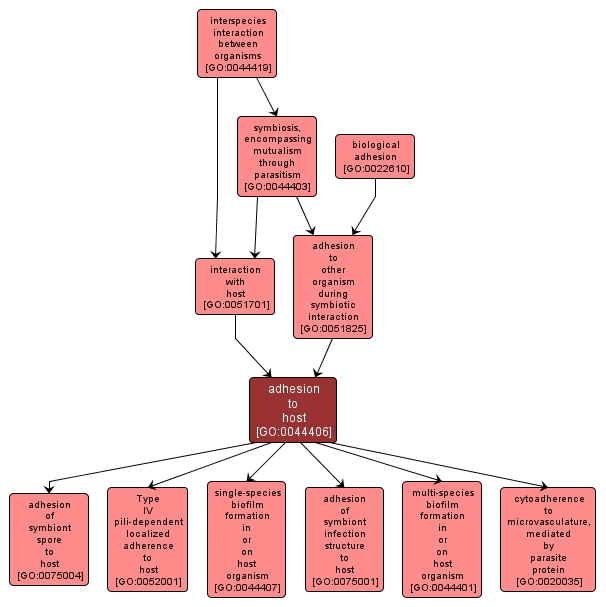GO TERM SUMMARY
|
| Name: |
adhesion to host |
| Acc: |
GO:0044406 |
| Aspect: |
Biological Process |
| Desc: |
The attachment of an organism to its host via adhesion molecules, general stickiness etc., either directly or indirectly. The host is defined as the larger of the organisms involved in a symbiotic interaction. |
| Synonyms:
|
|

|
INTERACTIVE GO GRAPH
|














